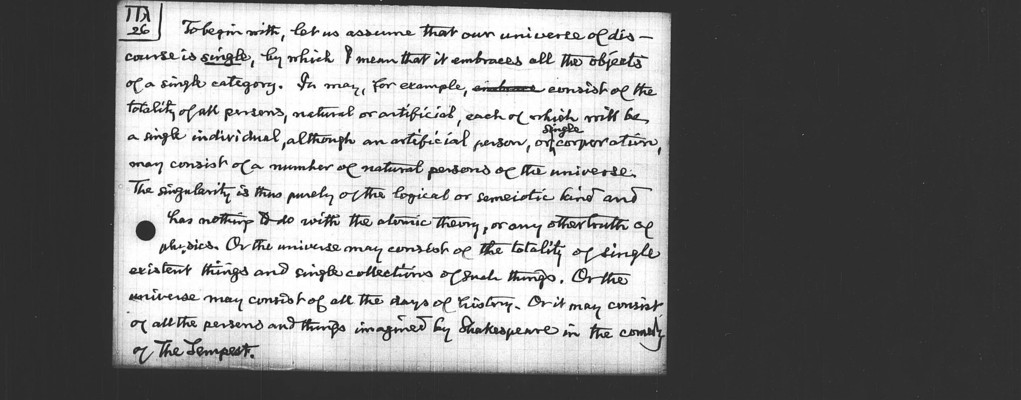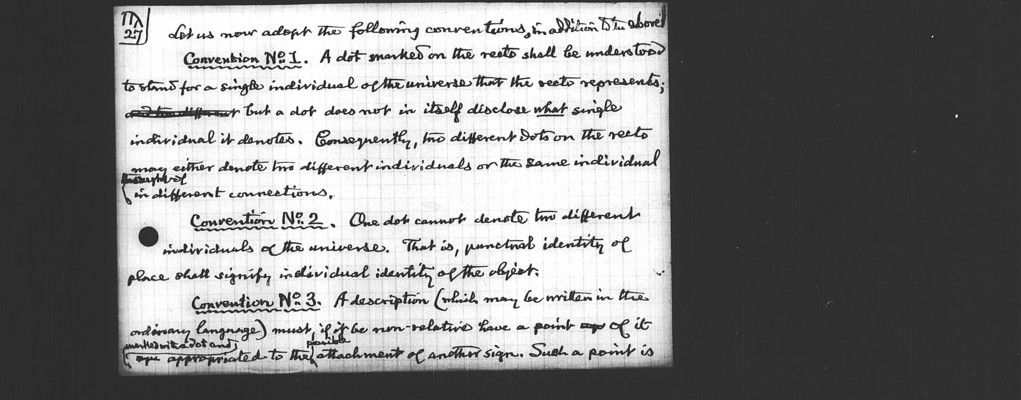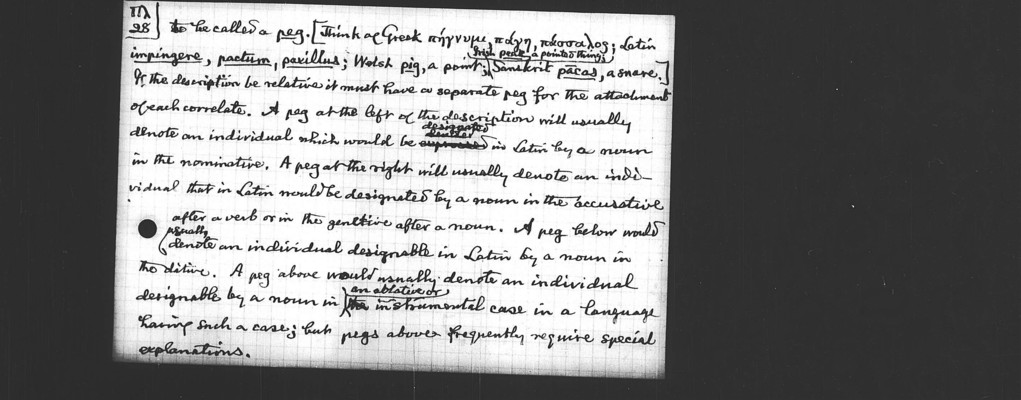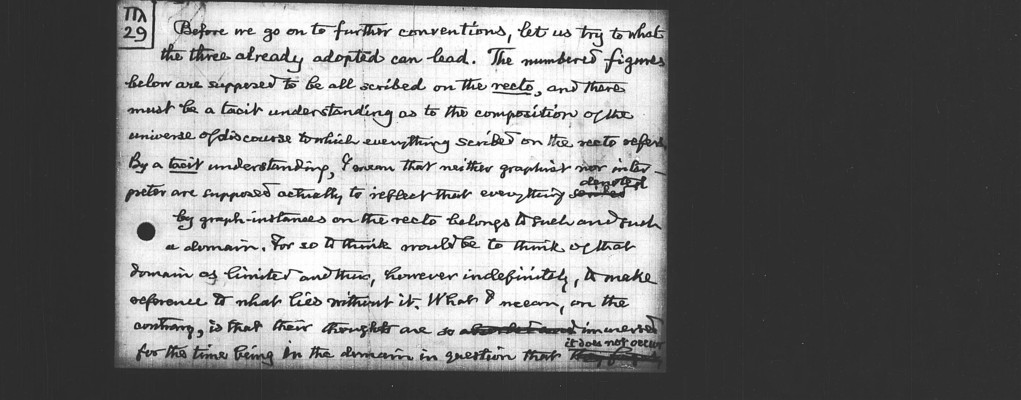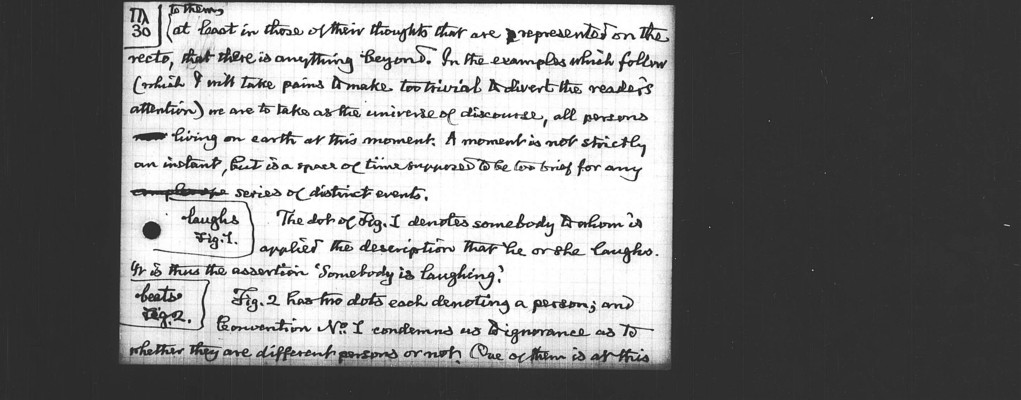Pages
26
πλ 26
To begin with, let us assume that our universe of discourse is single, by which I mean that it embraces all the objects of a single category. It may, for example, consist of the totality of all persons, actual or artificial, each of which will be a single individual, although an artificial person, or a single corporation, may consist of a number of natural persons of the universe. The singularity is thus purely of the logical or semiotic kind and has nothing to do with the atomic theory, or any other truth of physics. Or the universe may consist of the totality of single existent things and single collections of such things. Or the universe may consist of all the days of history. Or it may consist of all the persons and things imagined by Shakespeare in the comedy of The Tempest.
27
πλ 27
Let us now adopt the following conventions, in addition to the above:
Convention No. 1. A dot marked on the recto shall be understood to stand for a single individual of the universe that the recto represents; but a dot does not in itself disclose what single individual it denotes. Consequently, the different dots on the recto may either denote the different individuals or the same individual thought of in different connections.
Convention No. 2. One dot cannot denote two different individuals of the universe. That is, punctual identity of place shall signify individual identity of the object.
Convention No. 3. A description (which may be written in the ordinary language) must, if it be non-relative, have a point of it marked with a dot and approriated to the possible attachment of another sign. Such a point is
28
πλ 28
to be called a peg. (Think of Greek πη′γνυμι, πα′γη, πα′σσαλοζ; Latin impingere, pactum, paxillus; Welsh pig; Irish peak, a pointed thing; Sanskrit pacas, a snare.) If the description be relative it must have a separate peg for the attachment of each correlate. A peg at the left of the description will usually denote an individual which would be designated in Latin by a noun in the nominative. A peg at the right will usually denote an individual that in Latin would be designated by a noun in the accusative after a verb or in the genitive after a noun. A peg below would usually denote an individual designable in Latin by a noun in the dative. A peg above would usually denote an individual designable by a noun in an ablative or instrumental case in a language having such a case; but pegs above frequently require special explanations.
29
πλ 29
Before we go on to further conventions, let us try to what the three already adopted can lead. The numbered figures below are supposed to be all scribed on the recto, and there must be a tacit understanding as to the composition of the universe of discourse to which everything scribed on the recto refers. But a tacit understanding, I mean that neither graphist nor interpreter are supposed actually to reflect that everything denoted by graph-instances on the recto belongs to such and such a domain. For so to think would be to think of that domain as limited and thus, however indefinitely, to make refrence to what lies without it. What I mean, on the contrary, is that their thoughts are so immersed for the time being in the domain in question that it does not occur
30
πλ 30
to them at least in those of their thoughts that are represented on the recto, that there is anything beyond. In the examples which follow (which I will take pains to make too trivial to divert the reader's attention) we are to take as the universe of discourse, all the persons living on earth at this moment. A moment is not strictly an instant, but is a space of time supposed to be too brief for any series of distinct events.
(laughs Fig. 1.)
The dot of Fig. 1 denotes somebody to whom is applied the description that he or she laughs. It is thus the assertion 'Somebody is laughing.'
(beats Fig. 2.)
Fig. 2 has two dots each denoting a person; and Convention No. 1 condemns us to ignorance as to whether they are different persons or not. One of them is at this
